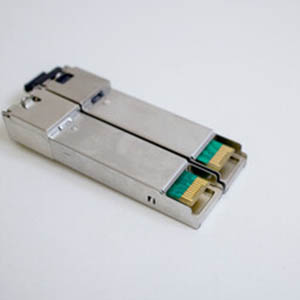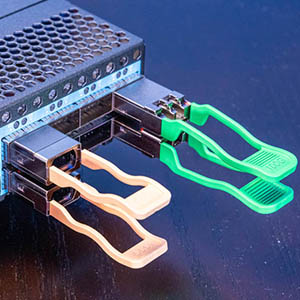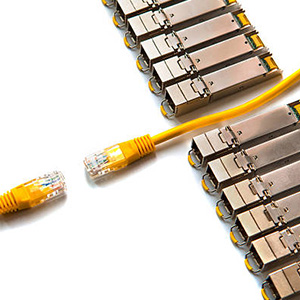In the realm of network connectivity, both media converters and optical transceivers play pivotal roles. Although they may seem to serve analogous purposes, their mechanisms and ideal applications vary significantly. This comprehensive guide uncovers the subtleties of optical transceivers and media converters, elucidating their unique features, practical applications, and the key factors that set them apart.
Diversity in Optical Transceivers
The Backbone of Fiber Optic Communications Optical transceivers, integral to fiber optic communication systems, facilitate data transmission across optical fibers. These devices are renowned for their ability to convert electrical signals into optical signals, and vice versa, ensuring seamless communication over extensive distances.

Diversity in Optical Transceivers
The landscape of optical transceivers is diverse, featuring types such as GBIC, SFP, SFP+, and XFP. Each type is tailored to specific data transmission needs, from the standard GBIC to the high-speed capabilities of SFP+ and XFP.
| Feature | GBIC | SFP | SFP+ | XFP |
|---|---|---|---|---|
| Data Rate | 1 Gbps | 1 Gbps | 10 Gbps | 10 Gbps |
| Applications | 1 Gigabit Ethernet (fiber) | 1 Gigabit Ethernet (fiber & copper) | 10 Gigabit Ethernet (fiber) | 10 Gigabit Ethernet (fiber), SONET, OTN |
| Size | Larger than SFP/SFP+ | Most compact | Most compact | Larger than SFP and SFP+ |
| Current Usage | Less common, legacy equipment | Common | Common for 10 Gigabit Ethernet | Less common, potentially for specific applications |
Media Converters: Bridging the Gap in Network Media Media
converters are versatile networking devices that establish seamless connectivity between dissimilar media types, including copper and fiber optic cables. They are pivotal in converting signals across media types, thereby expanding network reach and resolving compatibility challenges.
| Feature | Standalone Converter | Chassis-based Converter |
|---|---|---|
| Form Factor | Compact, self-contained unit | Modular design with multiple slots |
| Deployment | Point-to-point conversions | High-density deployments |
| Scalability | Limited | Highly scalable |
| Power Source | Separate power supply or PoE | Dedicated power supply for chassis |
| Management | Typically unmanaged, some managed options | Often managed, centralized control |
| Cost | Less expensive for low port counts | More expensive initially, cost-effective per port for high density |
Varieties of Media Converters
Media converters are available in various forms to address specific networking demands, such as fiber to copper converters, standalone converters, and chassis-based systems, each offering unique solutions for network media conversion.
A Comparative Analysis: Optical Transceivers vs. Media Converters
Despite their overlapping roles in network infrastructure, optical transceivers and media converters are distinguished by their functionality and application scope. While optical transceivers are specialized for long-distance, high-speed fiber optic communication, media converters offer adaptability in merging diverse network media.
Conclusion
SFP optical transceivers are vital for the construction and optimization of high-speed networks. By understanding the distinctions between different types of SFP modules and considering the specific needs of your network, you can ensure the seamless integration and performance of these critical components.










